This story is part of WWDC 2022, CNET’s complete coverage from and about Apple’s annual developers conference.
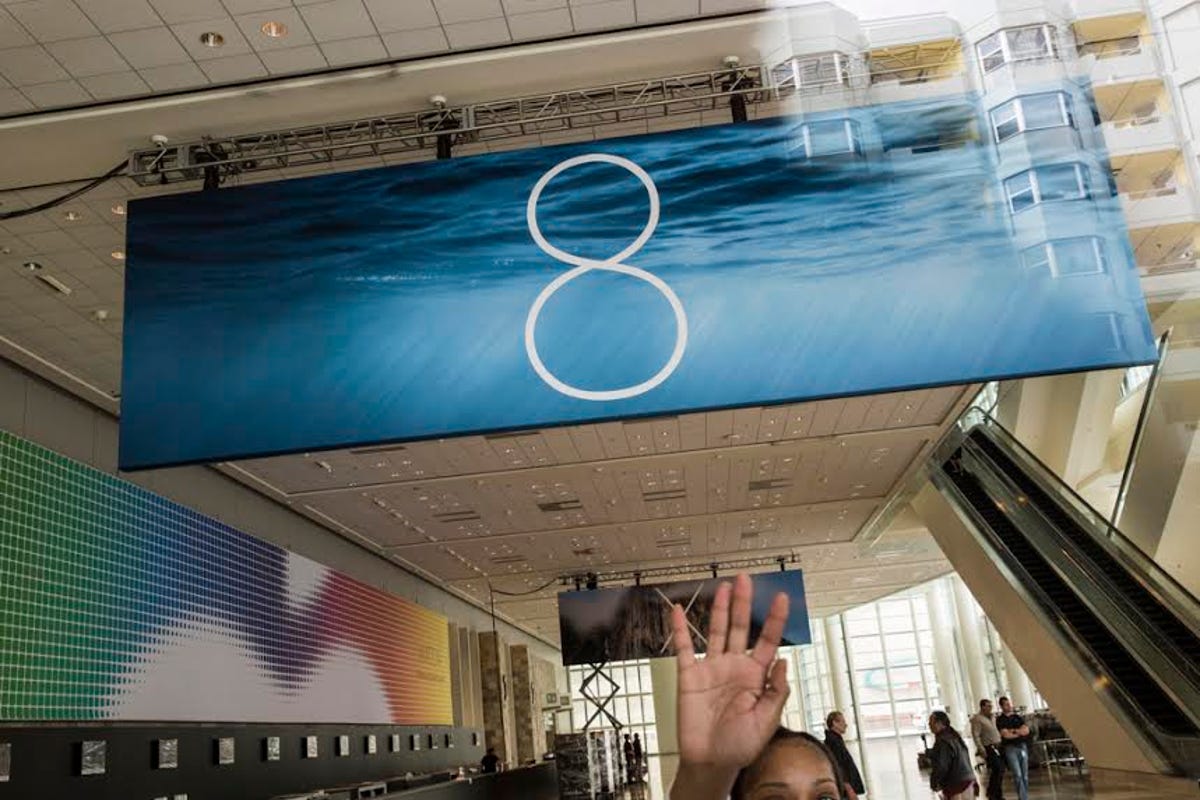
James Martin/CNET
Zilch.
That’s exactly what anyone tuning in to Apple’s Worldwide Developers Conference for any product announcements got on Monday. New MacBooks? Sorry. A new iPhone? Nope. That fabled iWatch? Please.
But that didn’t mean Apple came to its big spring show empty-handed. The company actually managed to jam in a good amount into its breezy, surprisingly funny, two-hour presentation. True to its developer audience, it focused on its OS X Yosemite desktop operating system and iOS 8 mobile software.
A closer look at Apple OS X Yosemite (pictures)


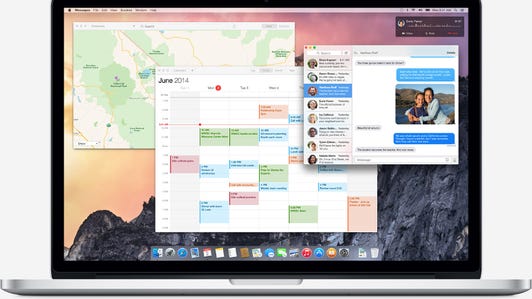

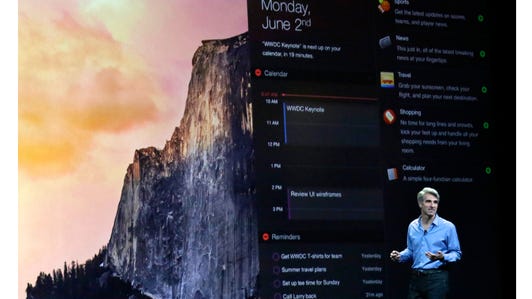

+10 more
There was nothing truly groundbreaking, with the announcements amounting to either nice-to-have improvements to its mobile and desktop experiences or developments with grander implications down the line. Apple’s diehard fans might salivate over today’s news, but casual technology enthusiasts could be excused if they found it to be a bit of a snooze.
“Today was all about securing the future,” said Carolina Milanesi, an analyst at Kantar Worldwide.
So does Apple still have its mojo? We still have to wait to find out. In the meantime, here are eight things we did learn from this year’s WWDC.
Get ready for a crazy second half. If Apple CEO Tim Cook’s teases of exciting new product categories (and senior executive Eddy Cue’s boast of the ” best product pipeline in 25 years“) are to be taken seriously, Apple should have a flurry of product announcements in the coming months.
At least last year, Apple showed off some revamped MacBooks, as well as offered a glimpse of its Mac Pro. The company is setting itself up for an extremely loaded back half, with a refresh of its MacBook, iPhone, and iPad lines, alongside a potential new product like the oft-rumored iWatch.
No early iPhone 6. There have been growing rumors over the past few months that Apple could break from its recent trend and offer up its next flagship smartphone earlier than expected, potentially in the summer.
It’s not that farfetched; Apple originally launched its new iPhone in the summer months. But alas, Craig Federighi, senior vice president for software with Apple, confirmed that iOS8 wouldn’t be available until fall, which suggests another fall launch for the iPhone 6.
Continuity is the new Apple buzzword. Federighi spent a fair amount of time showing off features that further tied together the MacBook with the iPhone. With OS X Yosemite, Mac users will be able to answer or make a call from their computer, which is linked to their iPhone.
Macs and iPhones will be able to sense each other, allowing you to finish a task on one device even if you started it on another.
Apple iOS 8 at WWDC 2014 (pictures)
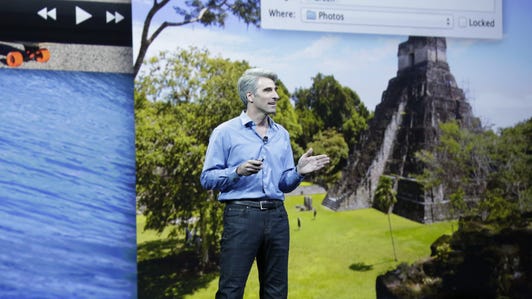





+14 more
“You’re going to see how they’ve been engineered to work seamlessly together,” Cook said as he kicked off the presentation.
Apple’s approach to integration differs from Microsoft’s approach, said Jackdaw Research analyst Jan Dawson, who called it more natural and useful.
“It’s also the kind of thing only Apple, with its tightly integrated approach to hardware, software and services, could pull off,” Dawson said in an e-mailed note.
The result: consumers who try out the iPhone might be nudged to buy an iPad and MacBook too. It’s not a new strategy, but the temptation to go all-Apple is greater than ever with all of this integration.
Federighi is a star. This year’s WWDC had a different vibe, feeling lighter and more relaxed than in the past.
“The stage was more relaxed and it was more fun,” Milanesi said. “It felt that way in the audience as well.”
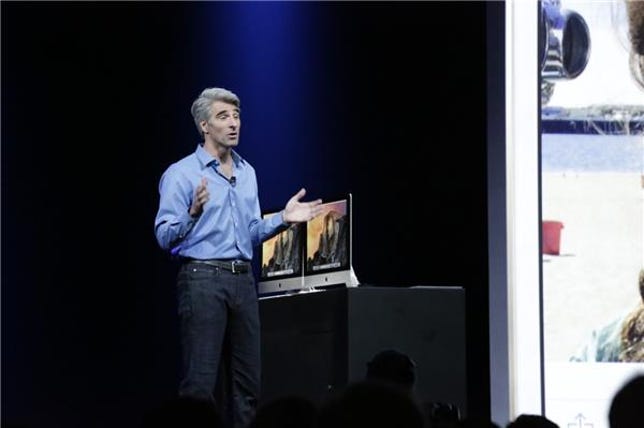

Tim Stevens/CNET
Much of the credit goes to Federighi, who anchored the presentation (at one point joking that this was an endurance test for him). He kept the keynote lively and was genuinely funny, at one point hanging up on his mother and then calling Dr. Dre instead, and offering a few effective sight gags. (OS X Weed, anyone?)
It’s not surprising that Federighi dominated the proceedings, as the event was dominated by software. But if he was auditioning to be a potential successor to Cook, he did a heck of a job on Monday. At least until the next big Apple event, he effectively serves as the face of Apple.
Cook wasn’t exactly a stiff either, and was particularly snarky when it came to Android. (It dominates in the market for mobile malware, he deadpanned.)
Apple opens itself…to an extent. The company may be famous for its walled garden approach, but it did throw a few bones to proponents of a more open ecosystem. A minor, but effective, announcement is the opening of its mobile OS to allow for third-party keyboards, something Android users have already benefited from.
Related stories
- Apple unveils OS X Yosemite
- Apple announces iOS 8 at WWDC 2014
- Apple’s new Swift coding language hopes to lock down errors
- Apple supercharges iOS gaming with Metal
- Full coverage of Apple’s WWDC
Are you a fan of Swype’s keyboard? Pretty soon, you’ll be able to get it on your iPhone. This is a feature that’s already available on Android, and even Windows Phone.
The openness didn’t stop at the keyboard. The company also opened its TouchID fingerprint sensor to other apps, which could have massive implications in the field of mobile transactions and business programs. Its new iCloud Drive service will handle all files, and not just ones for Apple. The new iOS 8 will also allow apps to extend their experiences through other parts of the phone, so third-party photo-editing software could show up as an option on Apple’s core Photo app.
HomeKit and HealthKit will be important down the line. The brevity of their appearances at WWDC suggests both apps will only play a minor role in the future of Apple.
That isn’t the case.
“That was more to do with not giving away what they have vs. having nothing to say,” Milanesi said.
HomeKit will be a critical weapon in the battle for the smart home, which Google likely kicked off with its $3.2 billion acquisition of Nest.
HealthKit, meanwhile, will likely play a key role in the iWatch (if it ever surfaces), and the company already mentioned that Nike, which is abandoning its FuelBand fitness tracker hardware business, is already working on it.
Apple wasn’t afraid to get geeky. The company ended the keynote by unveiling a new programming language, Swift, as well as talking about the kind of enhancements to gaming enabled by Metal. These are concepts that were probably lost to the millions of casual (and not-so-casual) Apple fans who tuned in to the conference.
For developers, it was music.
“The mood in the keynote haul was enormously positive around these changes,” Dawson said.
Ultimately, it’s getting these developers on board and creating new apps for Apple first that is one of the reasons its products continue to be successful.
The pressure is on. With another event gone and no new products, Apple has a lot of work if it plans on fulfilling its many promises.



